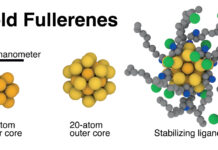
Sandra Pascoe Ortiz, a chemical engineering professor at the University of the Valley of Atemajac, in Zapopan, Mexico, has created bioplastic derived from the juice of the edible nopal cactus, also known as the prickly pear cactus. According to researchers, the cactus-derived plastic is safe for both animals and humans to consume and it biodegrades within one month in soil, or one week in water, which has implications for the mounting plastic waste crisis currently taking place in the world’s oceans.
To create the bioplastic, researchers juiced cactus leaves and mixed the juice with a non-toxic formula composed of glycerol, proteins, colorants and natural waxes. Once mixed, the concoction is dried on a hotplate to generate thin sheets of bioplastic. All told, the process takes roughly 10 days, according to Pascoe Ortiz.
“The plastic is basically made out of the sugars of nopal juice, the monosaccharides and polysaccharides it contains. The sugars, pectin and organic acids in the juice give it a very viscous consistency. Thanks to the viscosity, a solid material can be produced,” explained Pascoe Ortiz.
With possible applications ranging from plastic shopping bags, cutlery, food packaging, jewelry, toys and cosmetic containers, to name just a few, researchers are exploring how much weight the bioplastics can bear. Likewise, Pascoe Ortiz is investigating which cactus leaves generate the best plastic products as well as attempting to understand how quickly and under what circumstances the bioplastics will decompose. Unlike plastic derived from fossil fuels, cactus-derived plastic doesn’t last long, according to researchers. As such, the team believes that applications for its use might be for products that are single-use, disposable or intended for non-durable purposes.
As solutions to the mounting plastic crisis emerge, a variety of bioplastic solutions have also emerged, including plastic alternatives made from avocados, corn and lobster shells, for instance. Yet, the research team led by Pascoe Ortiz suggests that the cactus-derived plastic has an advantage over bioplastics made from sources such as corn, which has an environmental footprint thanks to the fertilizers and other resources used to grow it. Cactus, on the other hand, requires little to no intervention to grow.
Read more: Bioplastic derived from cactus leaves
Image courtersy of insights.globalspec.com
Related Links:
BioLogiQ Launches Three New BioPolymers That Enhance Packaging and Product Sustainability











